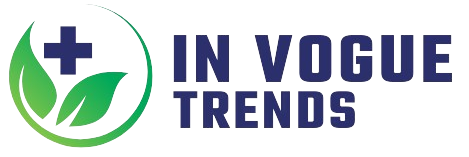Blog
Promising antidepressant offers hope for glioblastoma treatment
Glioblastoma multiforme is an extremely aggressive brain tumor that is currently incurable. Oncologists can extend the life expectancy of patients with surgery, radiotherapy, chemotherapy, or surgical interventions. However, half of patients die within twelve months of diagnosis.
Drugs that are effective against brain tumors are demanding to find because many cancer drugs often can’t cross the blood-brain barrier to reach the brain. This limits the range of possible treatments. Neuro-oncologists have been actively searching for better drugs that can reach the brain and eliminate the tumor.
Scientists led by Professor Berend Snijder from ETH Zurich have discovered a substance that effectively combats gliomas, at least in the laboratory: an antidepressant called vortioxetine. Scientists know that this inexpensive drug, which has already been approved by agencies such as the FDA in the US and Swissmedic, is able to cross the blood-brain barrier.
Snijder’s postdoc and lead author Sohyon Lee discovered this using pharmacoscopy, a special screening platform that researchers at ETH Zurich have developed in recent years. The study’s findings were recently published in the journal Natural medicineIn this study, scientists from ETH Zurich worked closely with colleagues from various hospitals, in particular with the group led by neurologists Michael Weller and Tobias Weiss from the University Hospital Zurich (USZ).
Testing hundreds of substances at once
Thanks to pharmacoscopy, scientists at ETH Zurich can simultaneously test hundreds of busy substances on living cells from human cancer tissue. Their study focused primarily on neuroactive substances that cross the blood-brain barrier, such as antidepressants, Parkinson’s drugs and antipsychotics. In total, the research team tested up to 130 different agents on tumor tissue from 40 patients.
To determine which substances affect cancer cells, the researchers used imaging techniques and computer analysis. Previously, Snijder and his team had used the pharmacoscopic platform exclusively to analyze blood cancers (see ETH News) and based on this, developed treatment options. Glioblastomas are the first solid tumors that they have systematically studied using this method, with the aim of using existing drugs for fresh purposes.
To screen, Lee analyzed fresh tumor tissue from patients who had recently undergone surgery at the University Hospital in Zurich. The ETH Zurich scientists then processed the tissue in the lab and tested it on a pharmacoscopy platform. Two days later, the researchers had results showing which drugs worked on the cancer cells and which didn’t.
Antidepressants are surprisingly effective
The results clearly showed that some, but not all, of the antidepressants tested were unexpectedly effective against cancer cells. These drugs worked especially well when they rapidly triggered a signaling cascade that is crucial for neural progenitor cells but also inhibits cell division. Vortioxetine emerged as the most effective antidepressant.
Scientists at ETH Zurich also used a computer model to test more than a million substances for their effectiveness against gliomas. They found that a common signaling cascade between neurons and cancer cells plays a crucial role and explains why some neuroactive drugs work and others don’t.
In the final stage, scientists from the University Hospital Zurich tested vortioxetine on mice with glioma. The drug also showed good efficacy in these studies, especially in combination with current standard treatment.
A group of researchers from ETH Zurich and USZ are currently preparing two clinical trials. In one, patients with glioma will be treated with vortioxetine in addition to standard treatment (surgery, chemotherapy, radiotherapy). In the other, patients will receive a personalized drug selection, which researchers will determine for each person using a pharmacoscopy platform.
The drug is widely available and inexpensive
“The advantage of vortioxetine is that it is unthreatening and very cost-effective,” says Michael Weller, professor at the University Hospital Zurich, director of the Department of Neurology and co-author of the study published in Natural medicine“Because the drug is already approved, it doesn’t have to go through a complicated approval process and could soon complement standard therapy for this deadly brain tumor.” He hopes oncologists will be able to apply it soon.
However, he warns patients and their loved ones against buying vortioxetine on their own and taking it without a doctor’s supervision. “We don’t yet know if the drug works in humans and what dose is required to fight the tumor, so clinical trials are necessary. Self-medication would be an incalculable risk.”
Snijder also warns against hasty apply of the antidepressant in the treatment of gliomas: “So far, its effectiveness has only been proven in cell cultures and in mice.”
Still, he believes the study has achieved a perfect result: “We started with this terrible tumor and found existing drugs that fight it. We’re showing how and why they work, and we’ll soon be able to test them in patients.” If vortioxetine proves effective, it would be the first time in decades that an busy ingredient has been found to improve the treatment of glioblastoma multiforme.
Source:
Magazine reference:
Lee, S., and others (2024) High-throughput identification of repurposed neuroactive drugs with potent antiglioma activity. Natural medicine. doi:10.1038/s41591-024-03224-y


